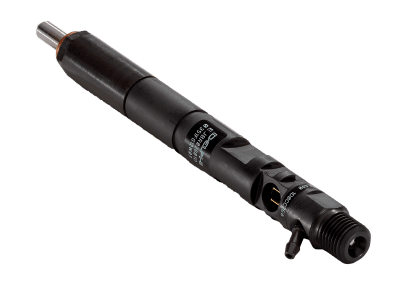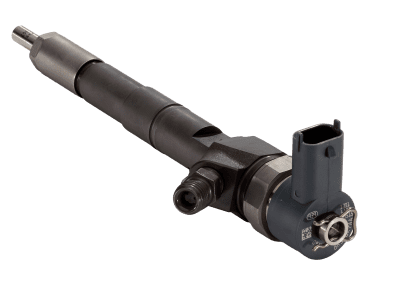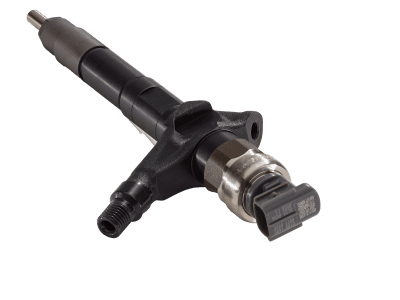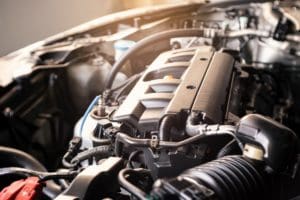What is an injector code?
In short, an injector code, aka a calibration code, correction code or trim code, is a hexadecimal or alphanumeric code which is programmed into the ECU to improve the precision and timing of the injected fuel for optimum engine, fuel consumption and emissions performance. Different manufacturers, use different terminology; Bosch call it an IMA, IQA, or ISA, Delphi C2i, C3i and C4i, VDO/Siemens an IIC, and Denso a QR code. All do the same thing.
Much like human DNA contains our unique genetic code, the instructions our bodies need to grow and function correctly, so does the injector code. A unique ID, it details the individual traits of each injector such as flow rates, response times and performance at different pressures. These characteristics are recorded to a code during manufacture and attached to the injector. When it is installed into a vehicle, the injector to cylinder configuration must be noted, and the code programmed into the ECU, so it knows how to function too.



Why are injector codes required?
Although common rail injectors are machined to extremely fine tolerances, variations are unavoidable. In fact, it is nigh on impossible to produce identical injectors. Nozzle orifice jet size, piston to bore clearance, solenoid magnetic force, moving component weight etc, can all cause very slight variations in flow. And at 2000+ bar pressures, even the tiniest difference in the amount of fuel delivered by each injector, can have a noticeable effect on engine performance, leading to reduced power, increased engine noise and excessive smoke.
Since the quantity of fuel delivered is proportional to the injection time or pulse, it is possible to compensate for these variances. By managing and adjusting the pulse width and injection timing applied to each injector, correct fuel delivery and correct injection timing can be achieved to ensure optimum cylinder combustion. This adjustment is what forms the code.
When should injectors be coded?
Most injectors – there are a few exceptions – will feature an injector code. Whenever an injector is installed in a vehicle, be it new OE or a replacement part, the code must be reprogrammed into the ECU, to ensure that the timing, and quantity of fuel delivered, are realigned.
Whilst logically the ECU can use closed loop control to automatically adjust the injector during a “re-learn” period, reprogramming the code is the only guaranteed way to validate if it is performing to OEM standards across the entire engine operating range. Not only this – it will also confirm if complete combustion has occurred, a crucial step in minimising NOx and particulate matter in order to meet emissions standards.
Note: All continental injectors have a ECU self-adaption process that needs to be performed even if they are coded, otherwise engine knock will occur.
What about remanufactured or repaired injectors?
When an injector is remanufactured, reconditioned or repaired, its characteristics will change too. Which is why it’s equally important that a new code, detailing its new properties, is allocated to remanufactured or repaired injectors as well.
Generating the code is a complex procedure and requires specialist equipment and software. Fortunately, as an approved remanufacturer for the leading OEMs – Bosch, Delphi Technologies, Denso, VDO and Stanadyne – Carwood has this capability, but not everyone does. Many so-called reconditioners, will use general broad or repeated codes, meaning that the ECU is working off the wrong parameters, and subsequently the vehicle is operating outside of its validated parameters too. Some ignore this critical step all-together.

What happens if you don’t recode an injector?
Either way the ECU will actuate the injector based on the previous programmed injector grading code, essentially meaning that it now has to guess how to perform. This can cause reduced engine performance, lower fuel economy and higher emissions. In some vehicles, it won’t even start, if the correct code isn’t entered.
Note: Applications fitted with Bosch Piezo injectors will not start if the IMA learn voltage code is outside a predefined learn band, typically +/-2 bands. This is a single alpha character of the grading, or on some later Bosch injectors, a 3-digit numeric code at the end of the grading code.
How to recode an injector?
Reprogramming the ECU is a straightforward, yet critical job:
- First, note both the calibration code on each injector, and which cylinder it will be fitted to – it’s advisable to recode the injector before installing it on the engine.
- Using a diagnostic tool, enter the new code into the correct cylinder. If the ECU does not accept the code, check you have input the correct vehicle details, ECU manufacturer, and/or calibration code.
- Note, some models will require a pilot relearn, also known as small quantity learning, after the injector has been reprogrammed and installed, to teach the ECU the ideal pilot injection for the engine. The procedure required to do this will vary by manufacture so it’s important to follow the VM’s guidelines.


